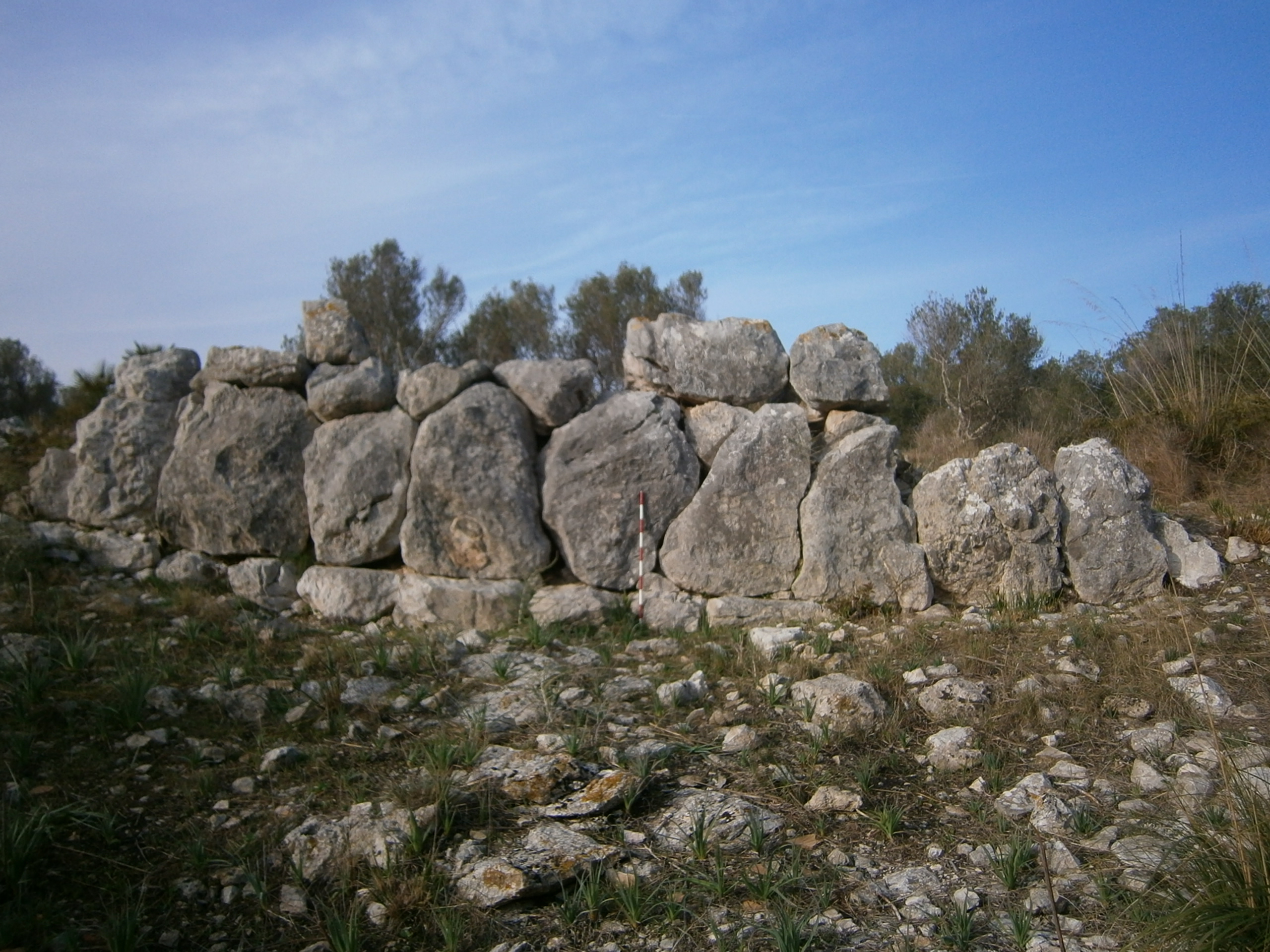 Abstract: The LEIA PALEOENVIRONMENTAL PILOT PROJECT aims at providing preliminary baseline paleoenvironmental information to the on-going UW LANDSCAPE, ENCOUNTERS AND IDENTITY ARCHAEOLOGY PROJECT (LEIAP, HTTP://LEIAP.WEEBLY.COM/). The latter is a UW lead landscape archaeology fieldschool project that seeks to reconstruct the history of occupation and land use of the Son Servera landscape (E. Mallorca, Spain) spanning from Late Bronze Age (c. 1300 cal. BCE) to early modern times. It represents the first comprehensive landscape project ever carried out in Mallorca (and the Balearic Islands) that combines very intensive surface survey with targeted excavations aimed at collecting datable material to tie chronologically the construction, use and abandonment of known sites with landscape-wide processes. The LEIA PALEOENVIRONMENTAL PILOT PROJECT, focuses, more precisely on the collection and analysis of a series of paleo-vegetation (pollen) and anthropogenic fire cores, as well as, basic geomorphological mapping for the study area.
Abstract: The LEIA PALEOENVIRONMENTAL PILOT PROJECT aims at providing preliminary baseline paleoenvironmental information to the on-going UW LANDSCAPE, ENCOUNTERS AND IDENTITY ARCHAEOLOGY PROJECT (LEIAP, HTTP://LEIAP.WEEBLY.COM/). The latter is a UW lead landscape archaeology fieldschool project that seeks to reconstruct the history of occupation and land use of the Son Servera landscape (E. Mallorca, Spain) spanning from Late Bronze Age (c. 1300 cal. BCE) to early modern times. It represents the first comprehensive landscape project ever carried out in Mallorca (and the Balearic Islands) that combines very intensive surface survey with targeted excavations aimed at collecting datable material to tie chronologically the construction, use and abandonment of known sites with landscape-wide processes. The LEIA PALEOENVIRONMENTAL PILOT PROJECT, focuses, more precisely on the collection and analysis of a series of paleo-vegetation (pollen) and anthropogenic fire cores, as well as, basic geomorphological mapping for the study area.
A major asset of the LEIA project is the collection of large amounts of geo-located +27,000 dGPS surface collection points, roughly 10m apart (±2m SE), from which almost 28,000 artifacts (all classified by period, weighed and measured) have been retrieved. Thus, the LEIA project is ideally primed to combine this rich archaeological dataset with paleoenvironmental information to begin exploring how recurrent local practices, trade contacts and invasions may have shaped the local landscape.
The LEIA PALEOENVIRONMENTAL PILOT PROJECT seeks to start redressing the current deficiency in paleoenvironmental information through a series of smaller projects aimed at answering specific questions:
- The collection of preliminary palynological information aimed at reconstructing vegetation history of our study area (Is there evidence of a vegetation shift during the mid to late fourth millennium? Did increase contact with the greater Mediterranean during the late first millennium brings upon changes in landscape exploitation?)
- The processing of geomorphological samples aimed at identifying and characterizing major erosion and sedimentary episodes in the Serverin landscape. (how reliable are our reconstructions of landscape occupation based on our survey results? what periods show clear evidence of human induced erosion?)
- The processing of field samples aimed at assessing the possible use, and impact, of anthropogenic fire through time. (how early did the use of fire for landscape management started in Mallorca? What areas in the landscape were targeted)?
This is a collaborative project with other Spanish (Biel Servera, Jordi Hernandez-Gasch, Anton Puig) and US (Grant Snitker, Nari Miller) researchers.
Report: [pending]
 Abstract: The LEIA PALEOENVIRONMENTAL PILOT PROJECT aims at providing preliminary baseline paleoenvironmental information to the on-going UW LANDSCAPE, ENCOUNTERS AND IDENTITY ARCHAEOLOGY PROJECT (LEIAP, HTTP://LEIAP.WEEBLY.COM/). The latter is a UW lead landscape archaeology fieldschool project that seeks to reconstruct the history of occupation and land use of the Son Servera landscape (E. Mallorca, Spain) spanning from Late Bronze Age (c. 1300 cal. BCE) to early modern times. It represents the first comprehensive landscape project ever carried out in Mallorca (and the Balearic Islands) that combines very intensive surface survey with targeted excavations aimed at collecting datable material to tie chronologically the construction, use and abandonment of known sites with landscape-wide processes. The LEIA PALEOENVIRONMENTAL PILOT PROJECT, focuses, more precisely on the collection and analysis of a series of paleo-vegetation (pollen) and anthropogenic fire cores, as well as, basic geomorphological mapping for the study area.
Abstract: The LEIA PALEOENVIRONMENTAL PILOT PROJECT aims at providing preliminary baseline paleoenvironmental information to the on-going UW LANDSCAPE, ENCOUNTERS AND IDENTITY ARCHAEOLOGY PROJECT (LEIAP, HTTP://LEIAP.WEEBLY.COM/). The latter is a UW lead landscape archaeology fieldschool project that seeks to reconstruct the history of occupation and land use of the Son Servera landscape (E. Mallorca, Spain) spanning from Late Bronze Age (c. 1300 cal. BCE) to early modern times. It represents the first comprehensive landscape project ever carried out in Mallorca (and the Balearic Islands) that combines very intensive surface survey with targeted excavations aimed at collecting datable material to tie chronologically the construction, use and abandonment of known sites with landscape-wide processes. The LEIA PALEOENVIRONMENTAL PILOT PROJECT, focuses, more precisely on the collection and analysis of a series of paleo-vegetation (pollen) and anthropogenic fire cores, as well as, basic geomorphological mapping for the study area.